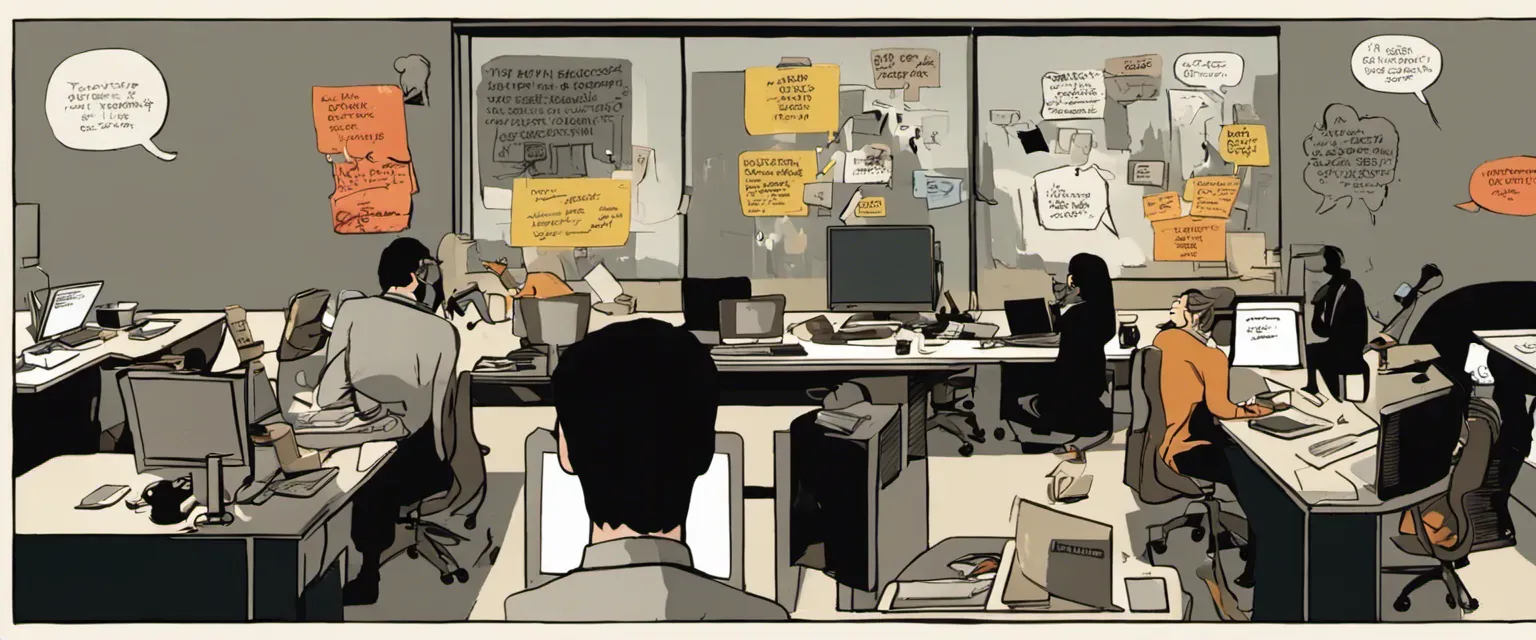——Rework by Jason Fried & Barbarians at the Gate by Bryan Burrough
In the vast realm of business literature, countless books have been penned with the intention of guiding aspiring entrepreneurs, executives, and innovators through the tumultuous landscape of corporate success. Two notable works, Rework by Jason Fried and Barbarians at the Gate by Bryan Burrough, stand out as remarkable contributions to this genre. Despite their contrasting approaches in terms of style, structure, and focus, both books offer invaluable insights for individuals grappling with the challenges and complexities of the business world.
Published in 2010, Rework serves as a refreshing departure from conventional business advice. Written by Jason Fried, the co-founder of the software company Basecamp, and his business partner David Heinemeier Hansson, the book challenges prevailing wisdom on topics like funding, productivity, marketing, and hiring. With its concise and punchy chapters, Fried and Hansson debunk long-standing myths and share unconventional strategies to help entrepreneurs build successful businesses on their own terms. Through witty anecdotes and powerful statements, Rework disrupts conventional thinking, urging readers to reconsider industry norms and embrace a more pragmatic and alternative approach.
On the other hand, Barbarians at the Gate, written by Bryan Burrough and published in 1989, provides an in-depth recounting of one of the most iconic business deals in history: the leveraged buyout of RJR Nabisco. Burrough, a renowned journalist and author, meticulously details the events that unfolded during the bidding war that ensued in the late 1980s, bringing together powerful financiers, corporate raiders, and Wall Street titans. With its investigative journalistic style, Barbarians at the Gate takes readers inside the boardrooms, negotiations, and power struggles, offering a fascinating insider account of the high-stakes game of corporate takeovers.
While Rework and Barbarians at the Gate may appear to occupy different ends of the business book spectrum, their impacts on readers are nonetheless profound. Both books, despite their divergent approaches, ultimately strive to empower individuals navigating the complex world of business, providing valuable lessons and unique perspectives to challenge traditional thinking and inspire action. As we embark on this comparative study, we will delve into the distinct features, underlying philosophies, and core messages of Rework and Barbarians at the Gate, ultimately shedding light on the shared wisdom and nuanced differences that make them thought-provoking and valuable reads for aspiring business leaders.
Brief Summary of Two Books
Rework by Jason Fried
“Rework” authored by Jason Fried and David Heinemeier Hansson is a highly practical and unconventional business book that challenges traditional notions of entrepreneurship. The book focuses on providing an alternative perspective to common business practices and offers advice on how to succeed in the modern work environment.
The authors argue that many traditional business practices, such as writing exhaustive business plans, working long hours, and seeking venture capital, are not only unnecessary but can actually hinder success. They advocate for a simpler, more efficient approach to entrepreneurship, emphasizing the importance of staying lean, nimble, and focused.
The book is divided into several chapters, each addressing a different aspect of running a business. It covers topics such as productivity, hiring, communication, marketing, and decision making. The authors provide practical tips and strategies for overcoming challenges and achieving success in each area.
One of the key messages of the book is the importance of taking action and making things happen rather than planning endlessly. It encourages readers to use their resources wisely, be adaptable, and iterate on their ideas quickly. The authors also emphasize the significance of embracing constraints and turning them into advantages.
Additionally, “Rework” challenges traditional approaches to work-life balance by promoting the idea of integrating work into life rather than trying to keep them separate. The authors advocate for focusing on high-quality work during designated hours and avoiding the trap of overworking and burning out.
Overall, “Rework” offers a refreshing and unconventional perspective on entrepreneurship, encouraging readers to question and rethink established norms. It provides practical advice and actionable steps that can help aspiring entrepreneurs and small business owners navigate the challenges of running a successful company in the modern world.
Barbarians at the Gate by Bryan Burrough
“Barbarians at the Gate” by Bryan Burrough is a non-fiction book that recounts the dramatic takeover battle for RJR Nabisco in the late 1980s. Burrough explores the corporate greed and financial strategies employed by Wall Street giants during the leveraged buyout era. The book follows the ambitious executives from both the management team of RJR Nabisco and the bidding firm Kohlberg Kravis Roberts (KKR), led by Ross Johnson and Henry Kravis, respectively.
Burrough delves into the corporate culture at RJR Nabisco, where excessive spending, lavish parties, and questionable practices had become the norm. As the company’s stock price began to slump, Johnson sought to turn the situation around by proposing a leveraged buyout of the company. This caught the attention of Kravis, who was known for his aggressive takeover tactics.
What follows is a high-stakes battle between Johnson and Kravis as they each prepare their bids to acquire RJR Nabisco. Burrough vividly portrays the intense negotiations, backstabbing, and ego clashes that unfolded during this corporate showdown. The narrative also sheds light on the inner workings of Wall Street, as investment bankers, lawyers, and media outlets maneuvered to profit from the deal.
As the bidding war escalates, the book highlights the exorbitant amounts of money involved and how leveraged buyouts became the new norm in the high-finance world. Burrough reveals the intricate details of the deals, the strategic moves made by both sides, and the tense moments that shaped the outcome. Ultimately, the book questions the moral implications of the corporate world, where immense wealth is generated at the expense of regular employees and the well-being of companies.
“Barbarians at the Gate” provides an engaging and informative account of one of the most fascinating and consequential corporate battles in history, giving readers an inside look at the cutthroat world of finance and the individuals who shape it.
Comparison between Two Books

Similarities in Business Strategy
Both “Rework” by Jason Fried and “Barbarians at the Gate” by Bryan Burrough discuss business strategy in different contexts, but there are some similarities in their approach and underlying principles.
1. Challenging conventional wisdom: Both books question commonly accepted business practices and challenge the traditional corporate mindset. “Rework” encourages questioning established norms and adopting a fresh perspective, while “Barbarians at the Gate” critically examines the practices of leveraged buyouts and mergers, highlighting their flaws.
2. Focus on simplicity: “Rework” emphasizes the need for simplicity in all aspects of running a business, arguing against overcomplicating processes and decision-making. Similarly, “Barbarians at the Gate” sheds light on the complex nature of corporate takeovers and simplifies the complexities to expose the underlying motivations and strategies.
3. Adapting to change: Both books acknowledge the importance of adaptability in today’s ever-changing business landscape. “Rework” encourages entrepreneurs to embrace change and iterate quickly, while “Barbarians at the Gate” showcases how companies adapt their strategies during hostile takeovers or bidding wars.
4. Disruption and innovation: The books recognize the power of disruption and the need for continuous innovation to stay ahead in the business world. “Rework” argues for challenging established market norms and finding innovative solutions that offer true value to customers. “Barbarians at the Gate” delves into strategic decisions taken by companies in response to disruptive bidding processes, showcasing the importance of innovative thinking.
5. Importance of focus: Both books stress the significance of maintaining focus on core competencies and avoiding unnecessary distractions. “Rework” advises against trying to appeal to everyone and emphasizes the need to stay focused on a target audience. “Barbarians at the Gate” illustrates the detrimental effects of diversifying too widely and losing focus on a company’s core business.
6. People-centric strategies: Both books highlight the significance of people within a business strategy. “Rework” emphasizes hiring the right people and building a strong team culture, while “Barbarians at the Gate” showcases how human personalities and motivations drive strategic decisions in high-profile takeovers.
Overall, while “Rework” focuses on the entrepreneurial perspective and “Barbarians at the Gate” revolves around the realm of corporate finance, both books share common ground in advocating for unconventional strategies, simplicity, adaptability, innovation, focus, and people-centric approaches as key elements of successful business strategy.
Divergences in Business Strategy
Rework by Jason Fried and David Hansson is a book that challenges traditional business strategies and provides a fresh perspective on how to approach work and productivity. On the other hand, Barbarians at the Gate by Bryan Burrough and John Helyar is a detailed account of the leveraged buyout of RJR Nabisco, showcasing the aggressive and cutthroat tactics employed in the corporate world. While both books delve into the realm of business, their approaches and perspectives on business strategy diverge significantly.
One notable difference between Rework and Barbarians at the Gate is their overall tone and attitude towards business strategy. Rework takes a more unconventional and contrarian approach, urging readers to question established norms and challenge traditional methods. Fried and Hansson argue for simplicity, lean teams, and iterative decision-making, advocating for a more efficient and flexible approach to business strategy.
In contrast, Barbarians at the Gate reflects a more ruthless and competitive approach to business strategy. The book explores the leveraged buyout of RJR Nabisco by private equity firms, where the focus is on financial engineering, aggressive bidding, and maximizing shareholder value. It sheds light on the high-stakes world of mergers and acquisitions, highlighting how corporate giants can be vulnerable to the wrath of determined, profit-seeking executives.
Another divergence lies in the scope of the books’ business strategies. Rework offers a broader, more holistic perspective that applies to various aspects of business, such as product development, marketing, and company culture. Its emphasis is on building a sustainable and adaptable business that challenges conventional wisdom. This book aims to inspire entrepreneurs and rethink deeply ingrained practices.
In contrast, Barbarians at the Gate zooms in on one specific event, the RJR Nabisco buyout, and provides a detailed account of the intricate strategies and power dynamics involved. It focuses on the immense financial stakes at play and paints a vivid picture of the corporate world’s ruthless pursuit of profit. The strategies discussed are more immediate and self-contained within the context of an aggressive takeover, rather than providing broader lessons on business strategy in general.
Overall, the divergence between Rework and Barbarians at the Gate lies in their tones, attitudes, and scope when approaching business strategy. Rework promotes a more unconventional, flexible, and adaptable approach, while Barbarians at the Gate portrays a cutthroat, profit-driven world of mergers and acquisitions. While Rework provides a wider range of insights applicable to different aspects of business, Barbarians at the Gate focuses on a single, intense event in corporate history.

Conclusion
Both “Rework” by Jason Fried and “Barbarians at the Gate” by Bryan Burrough are highly regarded books, but they cater to different interests and provide distinct perspectives. Ultimately, determining which book is more worthy of reading depends on personal preferences and objectives.
“Rework” is a modern, unconventional business book that challenges traditional ideas and promotes a fresh approach to work and entrepreneurship. Written by the founders of Basecamp, a successful software company, it offers practical advice and alternative strategies for achieving success in today’s fast-paced business world. “Rework” is valuable for those seeking a counterintuitive perspective on productivity, team collaboration, and business growth. If you’re an entrepreneur looking for transformative ideas or seeking to challenge conventional wisdom, “Rework” is an excellent choice.
On the other hand, “Barbarians at the Gate” is a captivating non-fiction book that delves into the real-life events surrounding the leveraged buyout of RJR Nabisco in the 1980s. It provides an in-depth account of the hostile takeover battle, exploring the motivations, strategies, and personalities involved. If you have an interest in finance, corporate history, or enjoy riveting narratives based on true events, “Barbarians at the Gate” is an engrossing read that offers valuable insights into the world of high-stakes finance and corporate warfare.
To determine which book is more worthy of reading, consider your specific interests and goals. If you are an entrepreneur or have interest in unconventional business approaches, “Rework” may be the better choice. Conversely, if you have an interest in finance, corporate history, or enjoy thrilling non-fiction narratives, “Barbarians at the Gate” may be the more compelling option.



